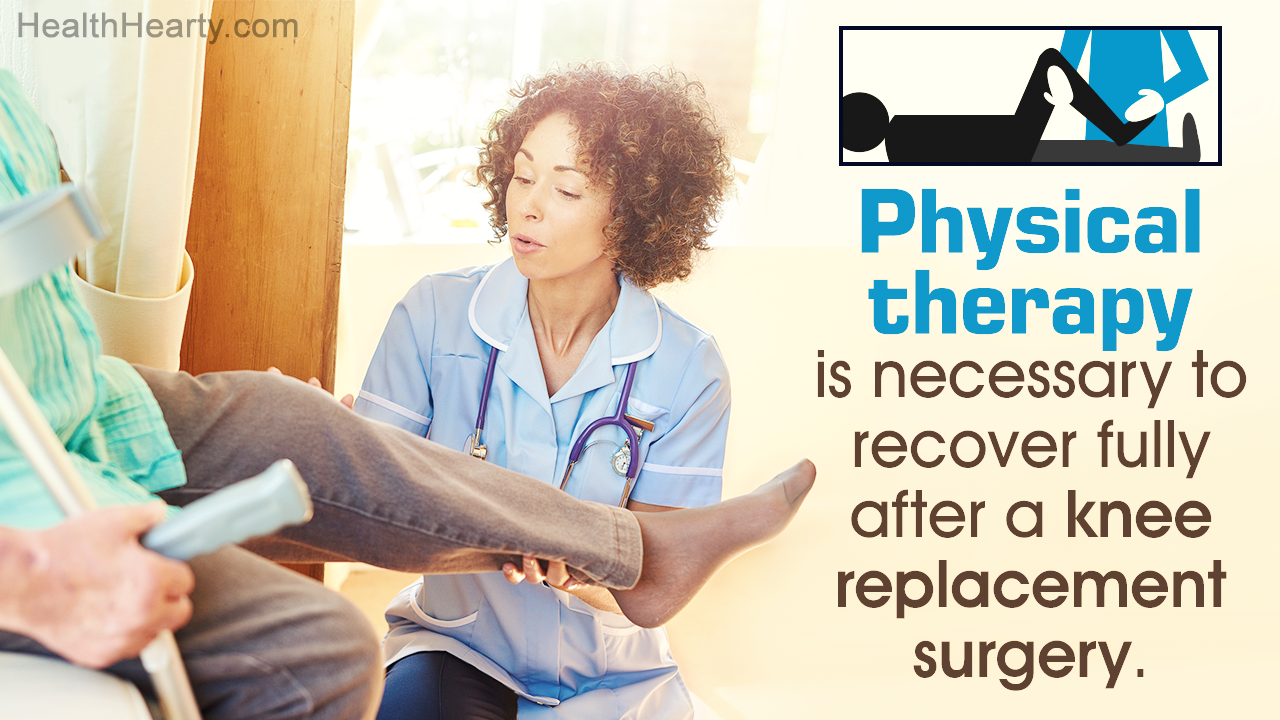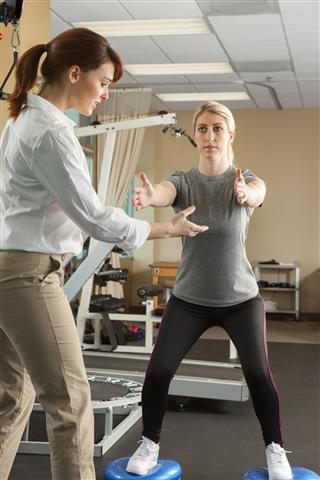
Total knee replacement surgery is usually required to relieve pain and restore the function of knee joints which are severely impaired because of various diseases. Read more about post surgery recovery tips in the following article.
Total knee replacement surgery, which is also called total knee arthroplasty, is helpful in relieving pain as well as restoring function in knee joints that have been severely impaired due to disease. During the surgery, the damaged cartilage and bone are surgically removed from the kneecap, shinbone, and thighbone and replaced with a prosthesis, or an artificial joint, made of polymers, high-grade plastic and alloys.
During the 1950s, when knee replacement surgery was in its nascent stages, artificial knees were just crude hinges. These days, however, with more than 300,000 surgeries taking place each year, there is a variety of artificial knee designs that are available to patients and doctors to choose from. Most of these artificial knee joints are designed to replicate the natural ability of the knee to glide and roll as it undergoes its range of movement.
If you have decided to go through total knee replacement surgery, make sure you weigh all the pros and cons. If you no longer can take the debilitating pain due to arthritis, osteoarthritis, and other conditions, then knee surgery is the option you can opt for. however, keep in mind, you will need to undergo a long recovery period post surgery. Also, keep in mind, the surgery is not free from risks. The procedure tends to vary from country to country, so you need to prepare accordingly after speaking to the doctor who will conduct the surgery.
Who Should Go In for Total Knee Replacement Surgery?
Total knee replacement surgery can help in improving knee problems caused by various degenerative conditions like rheumatoid arthritis, osteoarthritis and avascular necrosis, which is a condition wherein the obstruction of the flow of blood results in the tissue of the bone dying. In other words, knee replacement can help people if they have the following conditions:
- If there is pain in the knees which results in limiting activities like sitting in and getting up from chairs, climbing stairs, or even walking. Or, if there is moderate to severe pain in the knees even while at rest.
- The mobility and the functioning of the knees are hampered due to chronic swelling and stiffness in the knees, which results in preventing you from bending and straightening the knees.
- If other methods have been tried to alleviate the symptoms, such as braces, medications, physical therapy, weight loss, rest, and other forms of surgery – without much improvement.
- If there is a deformity in the knee, like when the joint is bowed inwards or outwards.
- Although older adults are the ones that knee replacement is usually performed on, there can be instances where young people who are highly active physically who may require it due to wearing out their knees prematurely.
Once a person undergoes the surgery, s/he needs to go through a long journey on the road to recovery. One needs to plan for the amount of time that will be required to regain one’s ability to walk normally again.
Recovery Tips
- One of the most important parts of rehabilitation after a surgery is physical therapy. And for the outcome to be optimal, the patient has to cooperate with the process fully. Physical therapy can be started 48 hours after the knee replacement surgery. During the early stages of physical therapy there will a certain degree of stiffness, discomfort, and pain. In order to keep the knees stable while walking, undergoing the physical therapy, and even sleeping, knee immobilizers will be used.
- While convalescing at the hospital, the patient will be encouraged to move their ankle and foot in order to increase the flow of blood to the muscles of the leg, which helps in preventing blood clots and swelling.
- The patient may be given blood thinners and may also have to wear compression boots or a support hose for further protection against clotting and swelling.
- Usually, a day after the surgery, a physical therapist will show the patient how to exercise the new knee. In order to help in regaining movement in the joint, the patient may have to use a continuous passive movement machine, which is a device that moves the knee slowly while the patient is still in bed.
Before the patient is discharged, s/he doctors see to it that they can get in and out of the bed on their own. The physical therapy given helps them walk with or without crutches or sticks. The patient will be made to walk up and down the stairs, to get the knees used to the strenuous activity. The patient should also be able to bend their knee totally or at least at an angle of 90° as well as straighten it completely.
During the first month after the surgery, the patient is required to take utmost care. They may suffer from pain, swelling and discomfort after the surgery. This can be reduced by using ice compression or use of a special compression bandage that will be recommended by the doctor. Make sure the wound is kept clean and dry, till the doctor removes the stitches. One may be able to stop using walking aides after a few days or several weeks, depending on individual case. After about 4 to 6 weeks, one can attempt driving a car.
As far as general care is concerned, one should avoid twisting, kneeling and squatting for the 6 to 8 weeks after surgery. One will be required to undergo the rehabilitation program for 3 to 6 months. The exercises taught in this program help the knees attain more flexibility as well as strength. One can start swimming, after about 6 to 12 weeks. If you love a game of golf, avoid wearing shoes with spikes. Avoid jogging, badminton, jumping, football, basketball, skating and other stressful activities. Resume these sports only after discussing with your doctor.
Recovery Time
If the patient follows all the instructions given by the surgeon about exercise, diet and care of the wound diligently, he/she will generally recover well during the first few weeks after the surgery. Once discharged from the hospital, to continue the process of recovery, the patient’s physical activity program will include:
- A walking program that is graduated, done indoors at first and then outdoors, to increase the mobility of the joint in gradual stages. At the initial stages crutches or a walker may be required.
- A gradual resumption of other household activities, which includes walking up and down graded areas and stairs.
- Continuing the exercises to strengthen the knee that was taught by the physical therapist at the hospital, which will have to be done several times during the day.
- Most people can usually resume most of their daily activities like light housework and shopping 3-6 weeks after the knee replacement surgery. If the patient has the ability of bending their knee enough to sit in a car and if the muscles recover enough strength to operate the accelerator and brakes properly, driving can be resumed in about 4-6 weeks.
- After complete recovery from the surgery, people can perform various low-impact activities like swimming, walking briskly, biking, or playing golf. However, activities that involve higher impact such as tennis, skiing, jogging or any sports that requires jumping or contact will generally not be possible. The patient will have to consult their doctor about their limitations as far as physical activity is concerned.
Follow all the instructions given by your doctor related to total knee replacement surgery recovery tips. Each individual is different and their ability to recover differs. Make sure you speak to your doctor openly about any doubts that you may have before you undergo this procedure.




